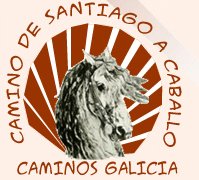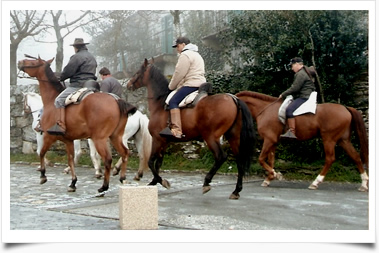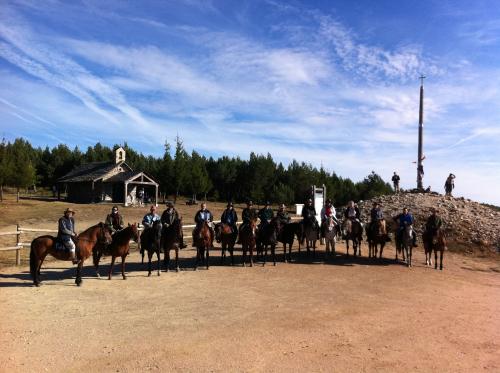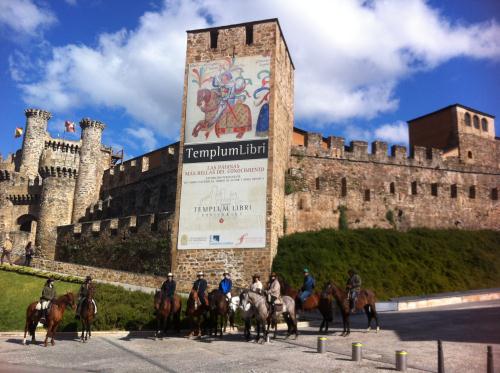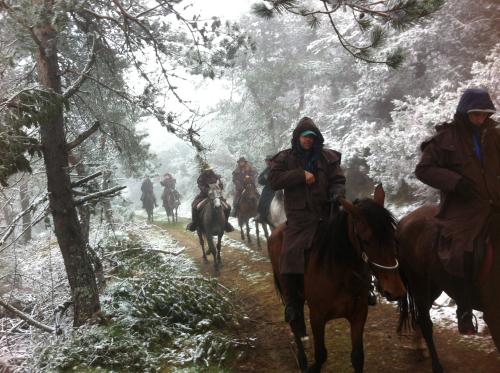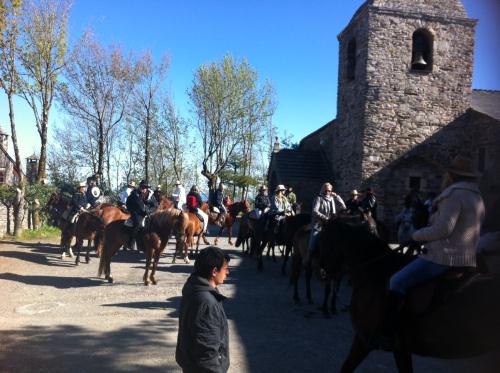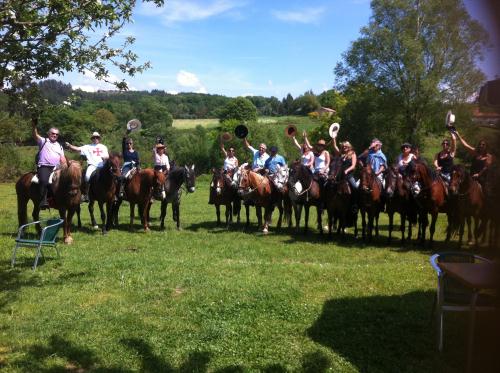- +34 639 503 815
- Caminos de Galicia. Caritel 2 Ponte Caldelas. 36829 Pontevedra
- caminosgalicia@hotmail.com
The French Route
The French Way on horseback – Historical Introduction
The French Way is the Jacobean itinerary with the longest historical tradition and the most internationally recognized. Its route through the north of the Iberian Peninsula was fixed with precision around 1135 in the Codex Calixtinus, a fundamental book of the Jacobean heritage.
This guide, attributed to the French cleric Aymeric Picaud, is evidence of the political-religious desire to promote the Compostela sanctuary and facilitate access to it, but it also demonstrates the existence of a demand for this type of information. When this book was written, pilgrimages reached their peak and the French Way reached its greatest affluence – if we exclude the present time – Santiago became the destination of pilgrims from all over the Christian world.
Itinerary
The French Way is the Jacobean itinerary with the longest historical tradition and the most internationally recognized. Its route through the north of the Iberian Peninsula was fixed with precision around 1135 in the Codex Calixtinus, a fundamental book of the Jacobean heritage.
This guide, attributed to the French cleric Aymeric Picaud, is evidence of the political-religious desire to promote the Compostela sanctuary and facilitate access to it, but it also demonstrates the existence of a demand for this type of information. When this book was written, pilgrimages reached their peak and the French Way reached its greatest affluence – if we exclude the present time – Santiago became the destination of pilgrims from all over the Christian world.
The French Way enters Galicia from El Bierzo up to the mountain pass of O Cebreiro (1,300 m), in the province of Lugo. There are 152 kilometers left on the Camino to reach Santiago de Compostela.
At the top of O Cebreiro is the village of protohistoric tradition, adapted to the harsh climatic conditions of the high mountains. This village is also a relevant ethnographic space that has its most visible reference in its set of pallozas, very characteristic of the northwest of the Iberian Peninsula.
From O Cebreiro, continuing through the mountain area and along an itinerary open to the immediate mountain ranges of Os Ancares and O Courel, you reach Hospital da Condesa and soon the village of Padornelo.
After reaching the port of O Poio (1,337 m, maximum height of the French Way in Galicia), begins the gentle descent to Fonfría, and from here, among beautiful and green panoramic views, you reach the town of Triacastela.
At the exit of Triacastela the Camino forks. You can continue directly to Sarria through a chain of old villages of great Jacobean tradition: A Balsa, San XiI, Montán, Pintín, Calvor and San Mamede do Camiño; or, by the stretch towards the town of Samos, which offers not only beautiful landscapes that crosses the Sarria River and that of villages such as San Cristovo or San Martiño, but also has a monastery that is considered one of the oldest in the West.
Whether we follow the itinerary of Samos or San Xil, the meeting place will be Sarria, the most populated town of the French Way in Galicia, with more than seven thousand inhabitants. From here the pilgrim leaves through the old bridge of A Áspera, on the way to Barbadelo, which is soon reached after crossing one of the most beautiful “carballeiras” – oak groves – of the route. Crossing between continuous masses of trees, meadows and farmland, through stretches that announce vestiges of ancient roads, the Camino enters the municipality of Paradela.
In the middle of an open and pleasant landscape, the route descends to the banks of the Miño River, where for the first and only time on the French Route in Galicia, the vineyards can be seen. To enter the town of Portomarín it is necessary to cross the bridge built in the early 1960s to overcome the Belesar reservoir on the Miño. You can also see the ruins of the old Portomarín, devastated by the waters, due to the construction of the reservoir, despite being one of the most beautiful and rich in heritage of Galicia. Through the village of Gonzar, the Way continues towards Castromaior, Ventas de Narón and Lameiros, a place already in the municipality of Monterroso. Somewhat further on, in the town of Ligonde, there are still relevant examples of traditional architectural typologies.
Immediately after, the route enters the lands of Palas de Rei, a municipality that owes its name to an alleged royal palace built remotely in its vicinity. The Camino leaves Palas through A Ulloa, a land of dairy production and tasty cheeses, among other traditional products. In the vicinity of this section, taking a small detour, you reach the castle of Pambre, one of the few Galician feudal castles that was saved from the fury caused by the fights of the “Irmandiños”. On the way back to the Camino, it begins its journey through the province of A Coruña, on the way to the village of Leboeiro and Furelos, which is crossed by a grandiose medieval bridge.
In Melide, a town considered the geographical center of Galicia, where we can enjoy the best Galician octopus, the French Way becomes urban and welcomes pilgrims on the Primitive Way. The route is integrated in a town with an intense historical Jacobean identity. Following Melide is Boente, Castañeda and close to Arzúa is Ribadiso.
In the town of Arzúa, famous for the great wealth of cheese in the region, the French Way welcomes pilgrims coming from the North Way. From Arzúa, the Camino goes again through meadows, oak and eucalyptus trees that surround small villages such as Calzada, Salceda, Brea … and Rúa, which is already at the gates of the municipality of O Pino, the last one before Santiago.
Already in the municipality of Santiago, and after passing through the vicinity of the city’s airport, the pilgrim arrives at A Lavacolla, very close to Monte do Gozo, a small elevation from which pilgrims have, for the first time, the distant view of the towers of the cathedral of Santiago.
We will visit the city of Santiago and the Cathedral, of course. Finally, we will transfer you to the airport or station, where our services will end.
An original option to do the French Way: Horse-drawn carriage.
In Caminos Galicia we also offer you the alternative of doing the French Way from Portomarín in three stages of one day each. In this case we can choose to do the trail in two ways: on horseback or by horse-drawn carriage.
Do not hesitate to contact us for more information.
- Phone: +34 639 503 815
- Caminos de Galicia. Caritel 2 Ponte Caldelas. 36829 Pontevedra
- E-Mail: caminosgalicia@hotmail.com
